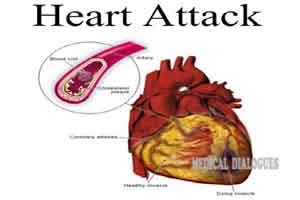- Home
- Editorial
- News
- Practice Guidelines
- Anesthesiology Guidelines
- Cancer Guidelines
- Cardiac Sciences Guidelines
- Critical Care Guidelines
- Dentistry Guidelines
- Dermatology Guidelines
- Diabetes and Endo Guidelines
- Diagnostics Guidelines
- ENT Guidelines
- Featured Practice Guidelines
- Gastroenterology Guidelines
- Geriatrics Guidelines
- Medicine Guidelines
- Nephrology Guidelines
- Neurosciences Guidelines
- Obs and Gynae Guidelines
- Ophthalmology Guidelines
- Orthopaedics Guidelines
- Paediatrics Guidelines
- Psychiatry Guidelines
- Pulmonology Guidelines
- Radiology Guidelines
- Surgery Guidelines
- Urology Guidelines
New peptide to combat a disorder that causes heart attacks at early age

Researchers at the University of Alabama at Birmingham are developing and testing a new peptide that they hope will lead to better treatment options for familial hypercholesterolemia.
FH is a genetic condition that results from the body's inability to clear low-density lipoprotein (LDL), or bad cholesterol, from the blood. This results in startlingly high cholesterol levels. There are two forms of FH: heterozygous FH (HeFH) and homozygous HoFH, which is the most serious type of FH. If untreated, HoFH often causes heart disease in the early teen years and sometimes even in early childhood.
Professors in the UAB Department of Medicine, G.M. Anantharamaiah, Ph.D., and C. Roger White, Ph.D., are working on the second version of a peptide licensed by Lipimetix, Inc., a bio pharmaceutical company. The peptide, called AEM-28-14, has the potential to treat patients suffering from HoFH in a new way instead of the usual treatment of plasma/LDL apheresis. Development of this peptide is facilitated by funding from the NIH.
AEM-28-14 inserts into cholesterol-rich lipoproteins and directs them to the receptors on the liver. The lipoproteins are then internalized and degraded through existing pathways, dramatically decreasing blood cholesterol levels for a longer period of time nearly two months, compared to plasma/LDL apheresis, which has to be administered every two weeks.
"Current treatments rely on increasing the excretion of LDL via the LDL receptor pathway," Anantharamaiah said. "In FH patients, since LDL receptor is defective; LDL cannot be cleared via this pathway. Therapeutic advancements have not been a rousing success."
Anantharamaiah says the newly developed peptide AEM-28-14 bypasses LDL receptor pathways and has been demonstrated to clear large amounts of LDL in relevant animal models, and he believes this may be the most powerful lipid reduction agent yet discovered.
An ideal LDL cholesterol level is typically 130 mg/dL. Adults with FH generally have LDL cholesterol levels of 190 mg/dL and above, and HoFH patients not using medication can have LDL levels between 500 and 1,000 mg/dL. This very high cholesterol acts like a poison to the blood vessels that results in large accumulation of fatty deposits and cholesterol deposits in the arteries that feed the heart, and that leads to a much greater risk of heart attack or stroke.
According to The FH Foundation, it is now believed that one in 250 people (or 1.3 million people in the United States alone) have HeFH and one in160,000 (or 2,000 people in the United States) have HoFH. Even though HoFH is still rare, it is much more common than once thought.
FH is responsible for 20 percent of all heart attacks in people 45 and younger. If untreated, 50 percent of men with FH will have a heart attack by age 50, and 30 percent of women will have a heart attack by age 60.
UAB Assistant Professor in the Division of Cardiovascular Disease Pankaj Arora, M.D., says getting tested for FH, if there is a prior family history of the disorder, is imperative.
"In families where FH has been diagnosed, children should be tested to allow behavioral and dietary modifications," Arora said. "Remember that, at the end of the day, it is bad genes with bad environment that causes events like heart attacks."
Arora says educating patients about the physical signs of FH can lead to an increased awareness.
"General education about common physical signs such as swollen tendons on the back of the heel, yellow deposits in the skin around the eyes and white deposit of cholesterol around the colored part of the eyes can help to increase awareness," Arora said.
He also added that reducing the LDL levels by at least 50 percent from the baseline is a treatment goal that clinicians strive to achieve by using high-intensity statins in FH patients.
There are only 58 plasma/LDL apheresis centers across the United States, significantly limiting patient access. While access is somewhat better in Europe, where population density of HoFH is higher, travel distance to apheresis centers in both the United States and Europe limit access for patients who are unable to receive regular therapy.
The scientists say their hope is that this new peptide will lead to better treatment options, which will in turn, lead to more treatment centers for patients to gain access.

Disclaimer: This site is primarily intended for healthcare professionals. Any content/information on this website does not replace the advice of medical and/or health professionals and should not be construed as medical/diagnostic advice/endorsement or prescription. Use of this site is subject to our terms of use, privacy policy, advertisement policy. © 2020 Minerva Medical Treatment Pvt Ltd